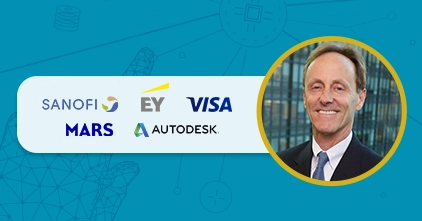Are you an L&D leader with a great eLearning program plan in mind? Here are 5 steps to get your stakeholders on board!

Do you have a great idea for your organization’s eLearning program? Do you want to elevate your company’s training? Or maybe you just simply care about the upskilling of your colleagues at work?
Well, with 98% of companies optimistic with eLearning, more companies are now shifting to eLearning as a tool for corporate training. According to the latest L&D trends, there is an increasing need for companies to provide flexible employee training.
But having an eLearning program is just the beginning. As much as bureaucratic processes bore us, they are necessary steps to take. So you must ensure that your stakeholders are willing to invest money, time, and effort on your training program.
Think of these two main personas: your company’s C-suite and your employees. They are the key figures you need to convince to make your corporate eLearning program successful.
But fret not because we give you five simple steps to achieve internal buy-in for your corporate eLearning program.
Address your stakeholders’ fears and feedbacks
Tap into your stakeholders’ fears. Think of how your corporate eLearning program will help them relieve their frustrations. For the C-suite, they fear the impending cost of constant replacement of employees due to skill gaps. On the other hand, employees fear of being stagnant, so they want to upskill and increase their value for the company.
For the L&D industry, one of the biggest challenges is the lack of learner engagement. One reason why this happens is that the training program is not interesting and engaging enough. But more often than not, it is also because learners are not consulted in the process.
Ask what your learners need (and want). Getting your learners’ feedback is crucial in creating and implementing an eLearning training program. For them to become really involved and active, you must also consider what they want.
For your language learning program, for example, you can leverage microlearning and gamification which may further excite them into taking their lessons. Also, giving incentives can also make employees more invested in their training.

Adopt marketing practices
Only 13% of employees are engaged at work. This says a lot about the company culture and environment of the majority of workplaces in the world. Effective and engaging internal communication is one of the demands of today’s modern work setting.
You must think like a marketer. LinkedIn reported that L&D professionals only spend 15% of their time promoting employee engagement through training. Make use of emails, blogs, and newsletters to endorse the training program to your employees. As an example, you can share language trivia every week, or come up with blog entries.
Some topics you can look into are tips on how employees can maximize their training program, benefits of learning a new language, and how eLearning can help them upskill.
Also, don’t underestimate the power of email marketing because 61% of employees discover more about their companies’ learning programs through it. Use this to promote and excite your learners. Update them on what’s to come.
Ensure personalization and customization through eLearning
Today’s modern workplace recognizes individuality. L&D trends highlight the benefits of personalization in employee training. This results in employee development that is based on his/her needs and goals.
But despite the growth in corporate training investment, the biggest challenge now is time. Your C-suite focuses their eyes on the prize (ROI). Employees, on the other hand, might think that eLearning is a waste of time, and it may only come in the way of their work.
For example, as language learning is said to be a waste of time especially for adult learners (which is a MYTH, by the way), relevant and curated content is more important than ever. Since your employees are always on-the-move, it is better if they can access lessons immediately applicable to their current work situation and setting.
Also, embrace your company’s culture! You can do this by investing in eLearning programs that integrate your company’s content into the eLearning portal. Through customization, employees can also feel more engaged not only in the training program but also in the company.

Think beyond ROI
ROI is part of the C-Suite language. But it does not mean that it is the only thing to consider. Other metrics like employee satisfaction, productivity, and engagement are some other measurements that you can cite to back up your corporate eLearning program.
It is also important to note other KPIs (key performance indicators) such as completion rate, learner satisfaction, competency, and job impact. Align these with your company’s training goals and objectives and think of possible long-term benefits.
Beyond convincing your executives through ROI, start emphasizing the benefits to your employees. You’ll be surprised how they might show support and be advocates for your proposed training program.
Use outstanding case studies
Do your homework. Through research, you can easily bring proof to the table. As much as If others can do it, we also can! seems dated, sometimes it still holds true. More than emotional appeal, you should also serve cold hard facts.
If you’re pushing for corporate language training, you can cite case studies of companies that use the same eLearning platform or have the same provider. It is also best if that solution has been recognized by an award-giving body which adds credibility to your proposal.




